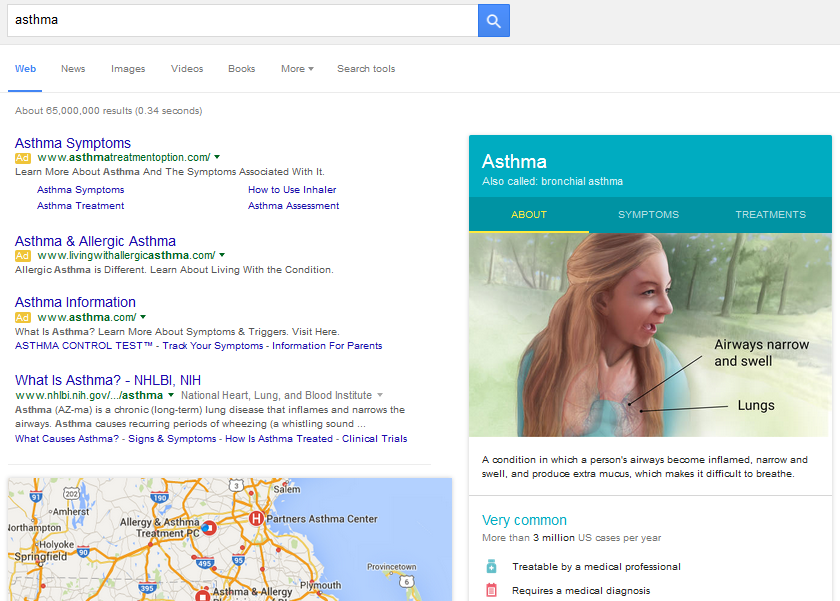We’ve done it. You have done it. So have a lot of other people we all know.
What is it?
Searched for information about a health condition online. As of February 2015, Google made it easier to find this type of information with a knowledge graph containing details for more than 400 medical conditions. And in early September, they more than doubled the number of conditions and enhanced the visual appearance of the health conditions knowledge graph, and added a downloadable PDF with the information. So now, when you search for a common condition such as “asthma”, you will see a page that looks like this:

I’m sure you’re thinking, “This is great – I get information about the condition, including symptoms and treatments. I don’t see any problems.” The problem is what if you are a hospital or medical facility with an asthma treatment program, and you have just spent time optimizing your web pages to rank in one of the top positions for the term? Now you are not only competing with health information sites such as WebMD as well as other hospitals, but you need to drag the searcher’s attention away from the bold visual.
All is not hopeless with this development. There are opportunities for hospitals and health care providers, including:
- Users that will scroll past the knowledge graph to organic results are likely to be more qualified leads. Students and casual browsers who are simply looking for definitions and general information will have no need to look further. Patients and families truly looking for care for a condition will be seeking additional information.
- Long-tail queries are (at least for now) not displaying the knowledge graph. So although phrases such as “exercise induced asthma” and “pediatric asthma” have less search volume than the broad term “asthma”, organic search results have better visibility and thus better click-throughs.
Beyond this, the question that remains for hospitals and healthcare providers is whether there is any benefit for them in maintaining pages on their site about medical conditions. For users that are seeking care for a condition, there is still value in gaining a ranking position in that space as the knowledge graph does not provide direction for treatment. Bottom line – perhaps there is a silver lining in the knowledge graph in allowing hospitals to do what they do best, provide treatment.
